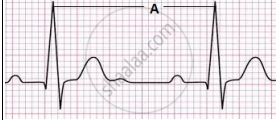Advertisements
Advertisements
प्रश्न
Define hypertension. Explain coronary artery disease and angina pectoris.
उत्तर
Hypertension: Persistently raised blood pressure higher than the normal is called hypertension.
i. Coronary artery disease:
- Coronary Artery Disease (CAD) is also known as atherosclerosis.
- In this, calcium, fat cholesterol and fibrous tissues get deposited in blood vessels supplying blood to the heart muscles making the lumen narrow.
ii. Angina pectoris:
- It is the pain in the chest resulting from a reduction in the blood supply to the cardiac muscles because of atherosclerosis or arteriosclerosis.
- It is characterized by severe pain and heaviness in the chest. The pain may spread to the neck, lower jaw, left arm and left shoulder. The pain usually results from exertion, when there is more demand of oxygen by the heart, but the supply does not meet the requirement.
APPEARS IN
संबंधित प्रश्न
State whether the following statement is true or false:
The value of systolic pressure is always lower than that of diastolic pressure.
What is meant by 'systolic pressure' and 'diastolic pressure'? What are their normal values?
Name the instruments used for measuring blood pressure.
What is blood pressure?
Give scientific reason.
Person who has undergone a heart transplant needs lifetime supply of immunosuppressants.
Identify ‘A’ from the following ECG.

Normal blood pressure is ______.
______ indicates heaviness with severe chest pain which may disappear with rest.
Blood pressure ______ indicates hypotension.
____________ refers to blocking of arteries is due to deposition of fats and calcium.
